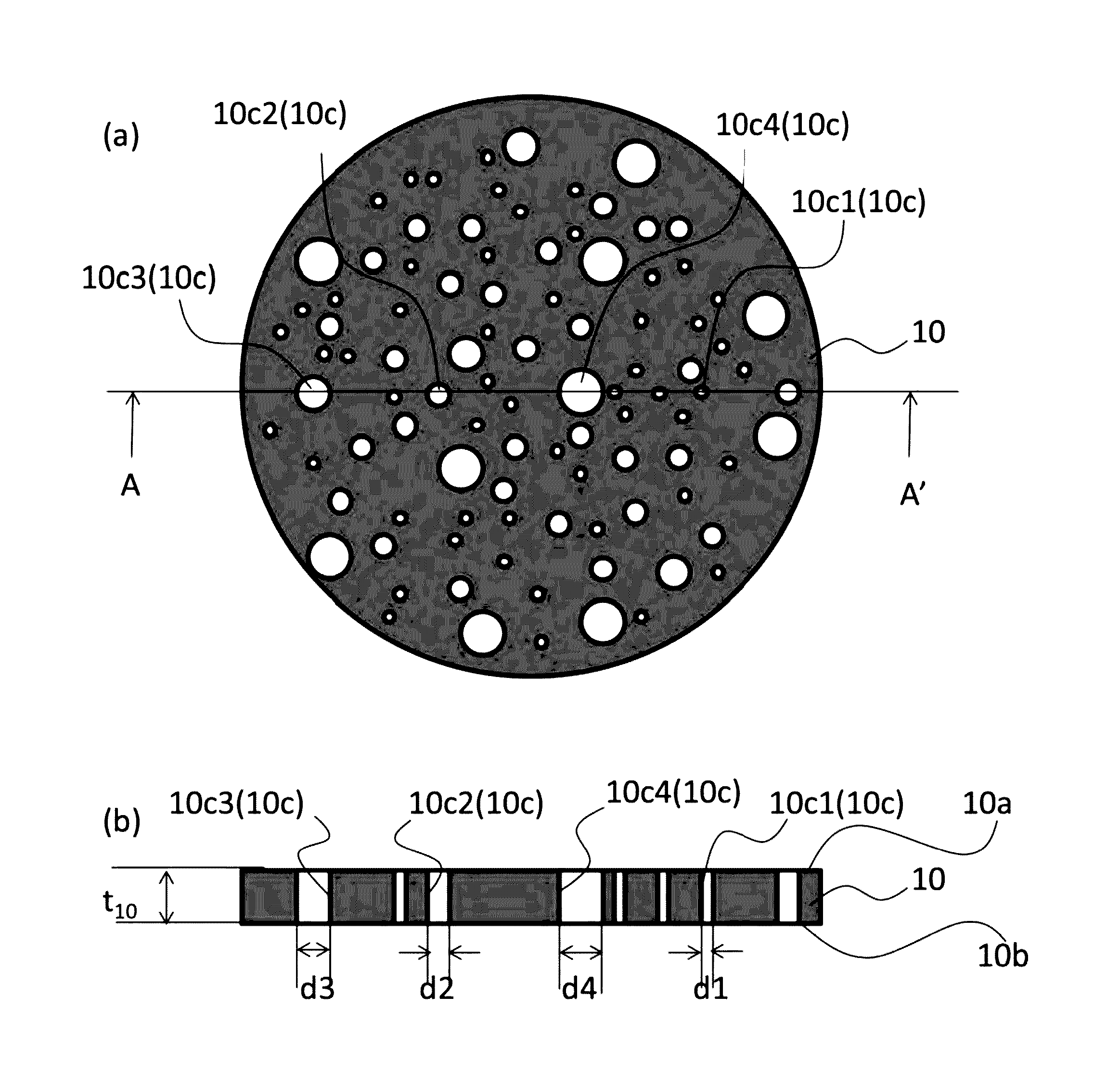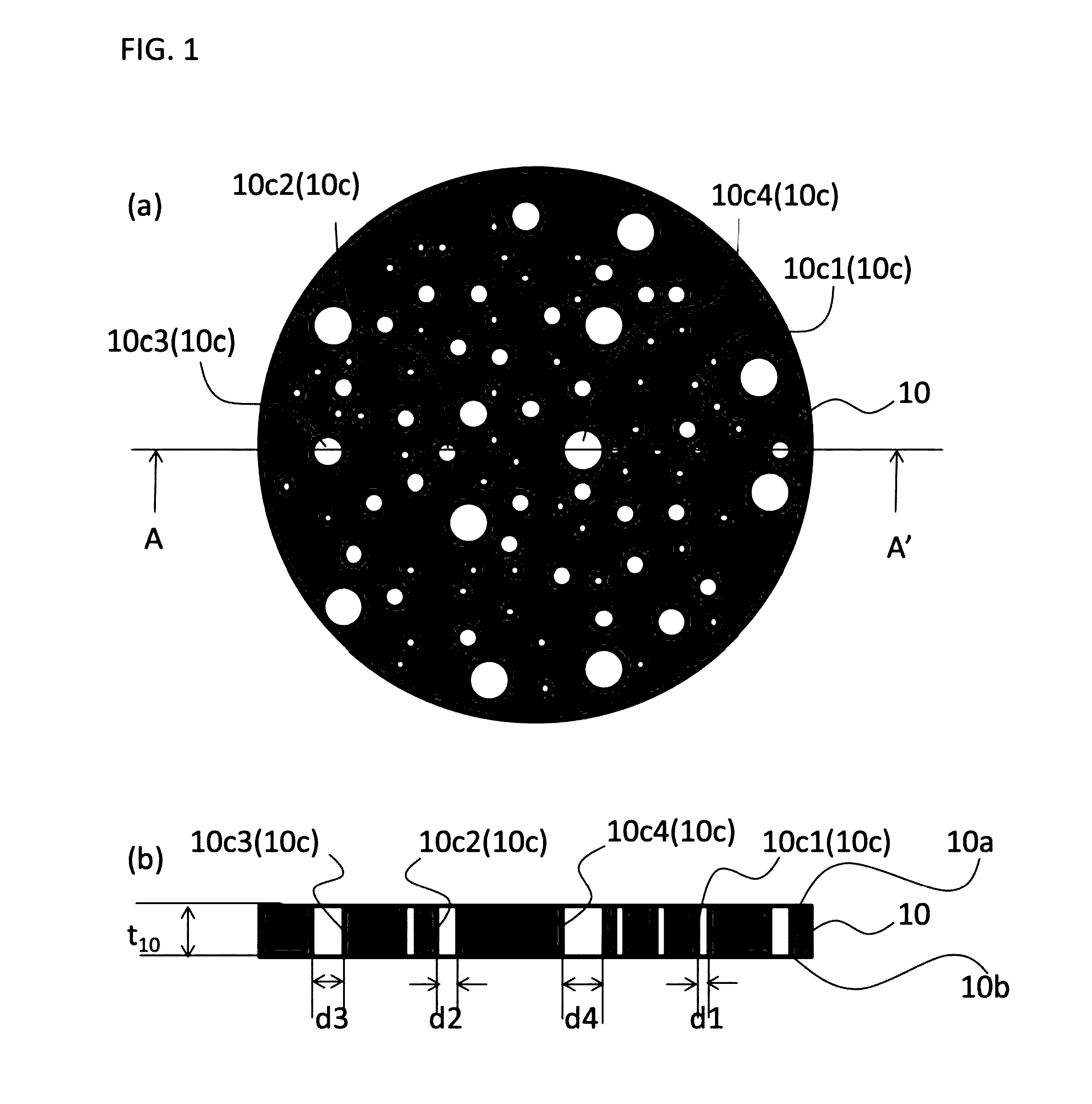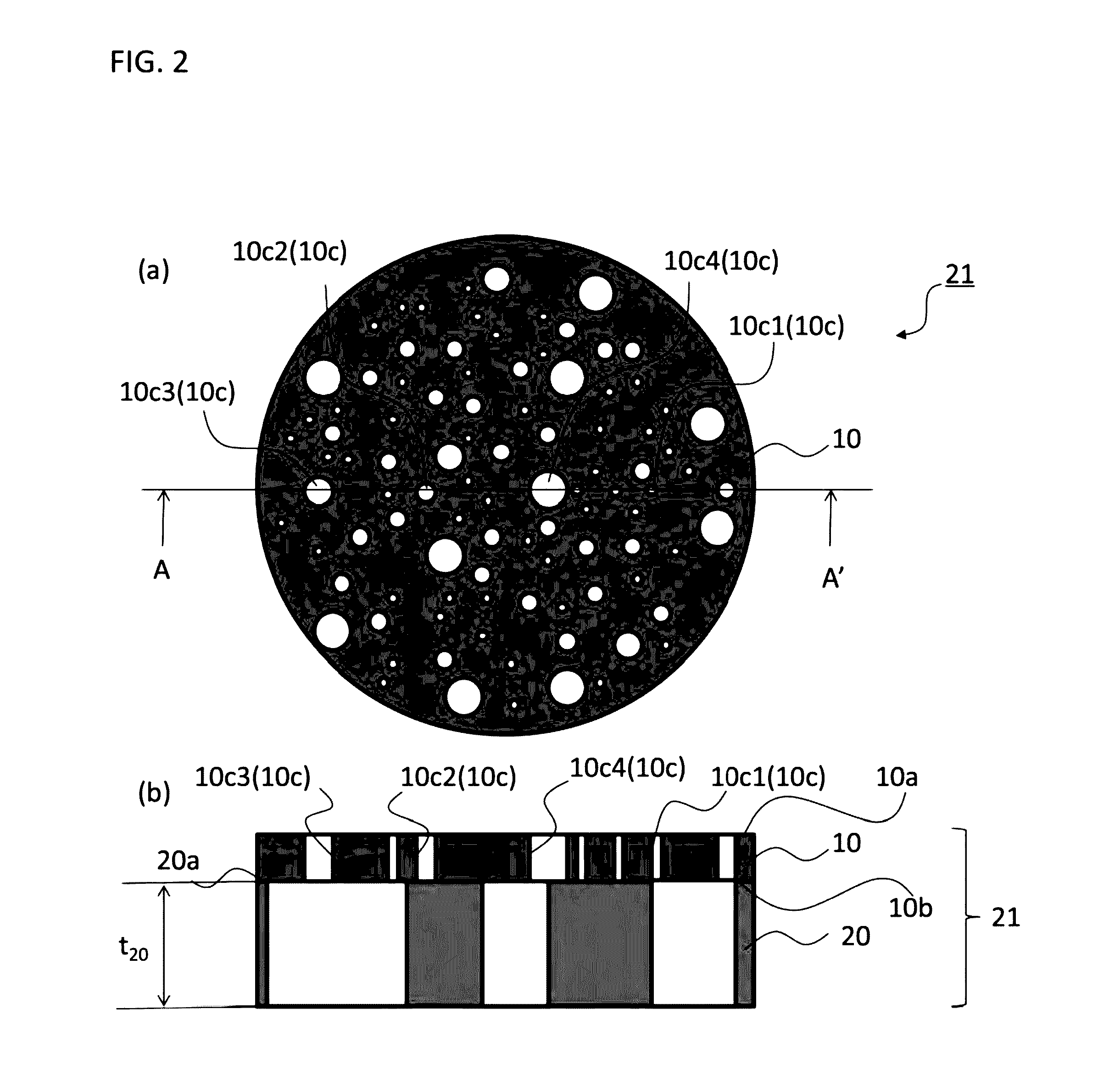Nanofiltration or reverse osmosis membrane made of hard carbon film, filtering filter, two-layer-bonded-type filtering filter, and methods for manufacturing same
a technology of reverse osmosis membrane and hard carbon film, which is applied in the field of nanofiltration or reverse osmosis membrane made of hard carbon film, and methods for manufacturing the same. it can solve the problems of insufficient water permeability of the reverse osmosis membrane, limited use thereof, and slow permeation rate of the organic solvent, so as to achieve fast filtering speed and improve mechanical strength. , the effect of easy work into the filtration modul
- Summary
- Abstract
- Description
- Claims
- Application Information
AI Technical Summary
Benefits of technology
Problems solved by technology
Method used
Image
Examples
example 1
Preparation of Two-Layer-Bonded-Type Filtering Filter Made of Porous PSF Membrane / Diamond-Like Carbon Film (1)
[0155]First, the porous PSF membrane prepared in Test Example 1-1 was placed at a predetermined position in a chamber of a plasma CVD apparatus.
[0156]Then, after the internal pressure of the chamber was reduced, diamond-like carbon was directly deposited on the porous PSF membrane using propylamine as a source gas for a film-forming time of 2 minutes at a film-forming temperature of a room temperature (25° C.), based on a plasma CVD method, whereby a two-layer-bonded-type filtering filter (Example 1-1) made of porous PSF membrane / diamond-like carbon film was prepared.
[0157]Then, a two-layer-bonded-type filtering filter (Example 1-2) was prepared in the same manner as in Example 1-1 except that a film-forming time was 30 minutes.
[0158]Next, a two-layer-bonded-type filtering filter (Example 1-3) was prepared in the same manner as in Example 1-1 except that a film-forming time ...
example 2
[0164]A two-layer-bonded-type filtering filter (Example 2-1) made of porous PSF membrane / diamond-like carbon film was prepared in the same manner as in Example 1 except that a film-forming temperature was −20° C.
[0165]Then, a two-layer-bonded-type filtering filter (Example 2-2) was prepared in the same manner as in Example 2-1 except that a film-forming time was 30 minutes.
[0166]Then, a two-layer-bonded-type filtering filter (Example 2-3) was prepared in the same manner as in Example 2-1 except that a film-forming time was 60 minutes.
[0167]The thickness of the diamond-like carbon film was 10 nm (Example 2-1), 150 nm (Example 2-2), or 300 nm (Example 2-3).
[0168]Table 2 indicates preparation conditions and the thickness of the two-layer-bonded-type filtering filters (Examples 1-1 to 2-3).
TABLE 2Film-formingtemperatureFilm-formingof DLCtime of DLCThicknessExample No.Film formationFirst layerSecond layerfilm (° C.)film (min)(μm)Example 1-1Two-layer-bonded-typePorous PSF membraneDLC film...
example 3
[0223]In the formation of the diamond-like carbon film by the plasma CVD method, the substrate may etched or chemically deteriorated. When the polymer ultrafiltration membrane is used as the porous support substrate, a temperature locally rises in the vicinity of the surface, and thus a phenomenon such as softening, melting, densification, or carbonization of the ultrafiltration membrane can be also predicted, whereby there is a possibility that a separation function layer is formed by such deterioration of the polymer.
[0224]In this Example, a self-supported membrane of diamond-like carbon was manufactured to demonstrate the fact that the outermost diamond-like carbon film functions as a filtering filter, the self-supported membrane was transferred to a porous support substrate, and thus performance of the filtering filter was evaluated.
[0225]A glucose layer was formed on the support substrate such as silicon or glass, thereby preparing a diamond-like carbon film by a plasma CVD met...
PUM
| Property | Measurement | Unit |
|---|---|---|
| pore diameter | aaaaa | aaaaa |
| thickness | aaaaa | aaaaa |
| diameter | aaaaa | aaaaa |
Abstract
Description
Claims
Application Information
 Login to View More
Login to View More - R&D
- Intellectual Property
- Life Sciences
- Materials
- Tech Scout
- Unparalleled Data Quality
- Higher Quality Content
- 60% Fewer Hallucinations
Browse by: Latest US Patents, China's latest patents, Technical Efficacy Thesaurus, Application Domain, Technology Topic, Popular Technical Reports.
© 2025 PatSnap. All rights reserved.Legal|Privacy policy|Modern Slavery Act Transparency Statement|Sitemap|About US| Contact US: help@patsnap.com



